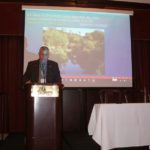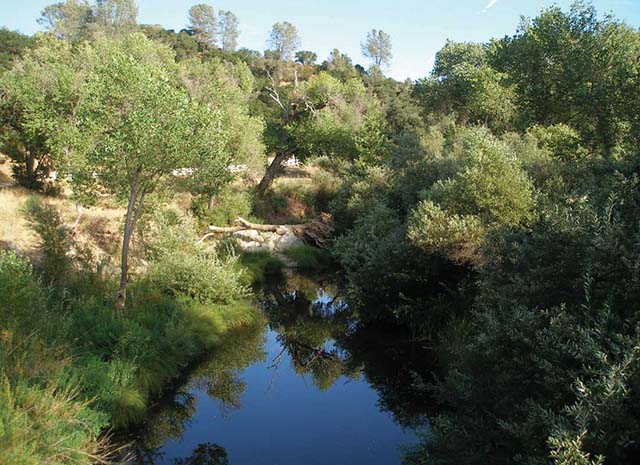Salinas River Symposium a Success
Over 70 people attended the first Salinas River Symposium presented by Ecologistics on January 22 at the Paso Robles Inn. Participants spent the day learning and talking about issues facing the 170-mile Salinas River and its surrounding 4,200 square mile watershed.
The “Upside Down River”
From its headwaters in the Garcia Mountains near Santa Margarita in San Luis Obispo County the Salinas River flows northwestward through the Salinas Valley known as the “Salad Bowl of the World” and empties into the Monterey Bay National Marine Sanctuary in Monterey County. Because it flows north instead of west or south and has one of the largest subsurface flows in the nation, the Salinas River is called the “Upside Down River.”
Many Central Coast towns and cities rely on the Salinas River for water as do farms, ranches, vineyards, two military bases, and terrestrial and aquatic wildlife.
Some of the issues facing the Salinas River are drought, population growth, erosion, pollution, invasive species, groundwater depletion, and degradation or loss of wildlife habitat.
Salinas River Symposium Highlights
The Salinas River Symposium brought together a diverse group of stakeholders to meet each other, discuss issues, and share solutions. Attendees included representatives from 12 public agencies, 5 universities, 7 nonprofit organizations, numerous farming and ranching interests, businesses and interested citizens. San Luis Obispo County Supervisor Frank Mecham and Chris Lopez, Chief of Staff for Monterey Supervisor Simon Salinas participated.
 Dr. Doug Piirto Making Opening Remarks
Dr. Doug Piirto Making Opening Remarks Participants at the Breakout Session
Participants at the Breakout Session Supervisor Frank Mecham with Attendees
Supervisor Frank Mecham with AttendeesThe topics covered by the speakers ranged from water quality to steelhead trout habitat to an online waterway-mapping tool. A panel presented a successful Salinas River floodplain restoration project in Monterey County. Armed with audience response clickers attendees participated in a real-time survey, which showed 100% felt the Salinas River faces significant issues and 78% felt strongly that the river needs a comprehensive watershed-based plan.
Over a dozen people signed up to form a working group to identify short and long-term management goals, enhance agency collaboration, and expand data sharing.
Visit the Ecologistics Salinas River Symposium webpage for information about the speakers and copies of their presentations.

